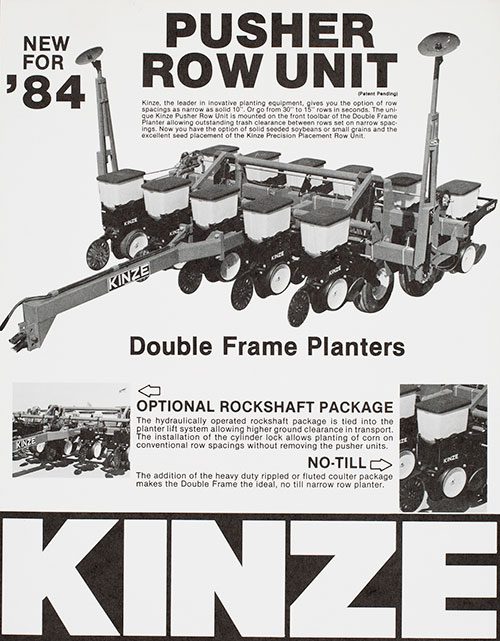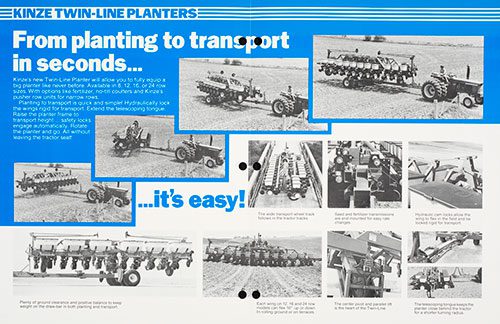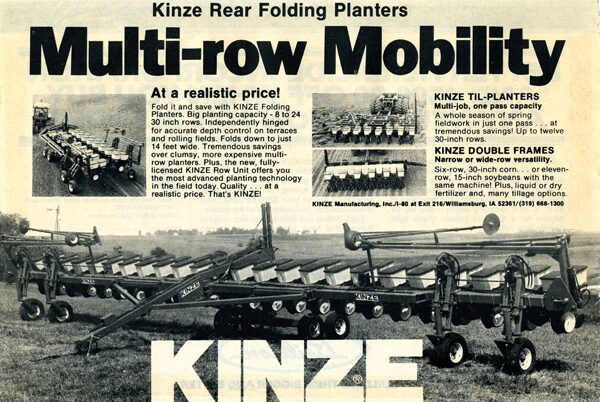Because of the popularity of our Throwback Thursday posts on Facebook and Twitter, we’ve started a new, nostalgic series of blog posts that showcase some of the old ads, brochures and articles, which chronicled Kinze innovations throughout our nearly 50 year history. Let’s travel back in time…to the 1980s!
The 1980’s: Split Rows and Pivoting Toolbars
Shortly after the success of the rear-folding planter, we (Kinze) went to work on ways to reduce equipment costs by developing a new split row concept, designed to seed conventional and narrow rows with just one planter. Solution? The patented Kinze push-row unit, initially developed for smaller 4R-, 6R- and 8R Kinze planters. Larger folding planters required a totally new folding concept and led to one of the biggest game-changers in planting: the patented pivot-fold planter (originally called the Twin-Line Planter) available in 12- and 16-row sizes.
Pusher Row Unit
This 1983 new product sheet shows the new “push-type” Kinze row unit design. It allowed farmers to switch from planting 30″ corn to 15″ soybeans in minutes. Double-Frame options also gave them the ability to apply liquid or dry fertilizer as well, by simply by adding an extra toolbar on the front.

Twin-line Planters
The inside spread of this old Twin-Line planter brochure (1985) displays the first-ever pivot folding system, still used on today’s current 3500, 3600 and 3660 planter models.

Split Row Planting
The combination of split rows, pivot-fold, and the patented Kinze brush-type meter proved to be vastly superior to conventional drill systems, especially when planting soybeans…as documented by annual field tests conducted by Farm Journal.

One Til-planter. One Pass.
Another old literature piece (1982) shows another unique planter, that was later dropped by Kinze. The Kinze Til-Planter – available in 6, 8 and 12 row sizes – was able to prepare the seedbed, incorporate chemicals, apply anhydrous ammonia and plant … all in one pass.

